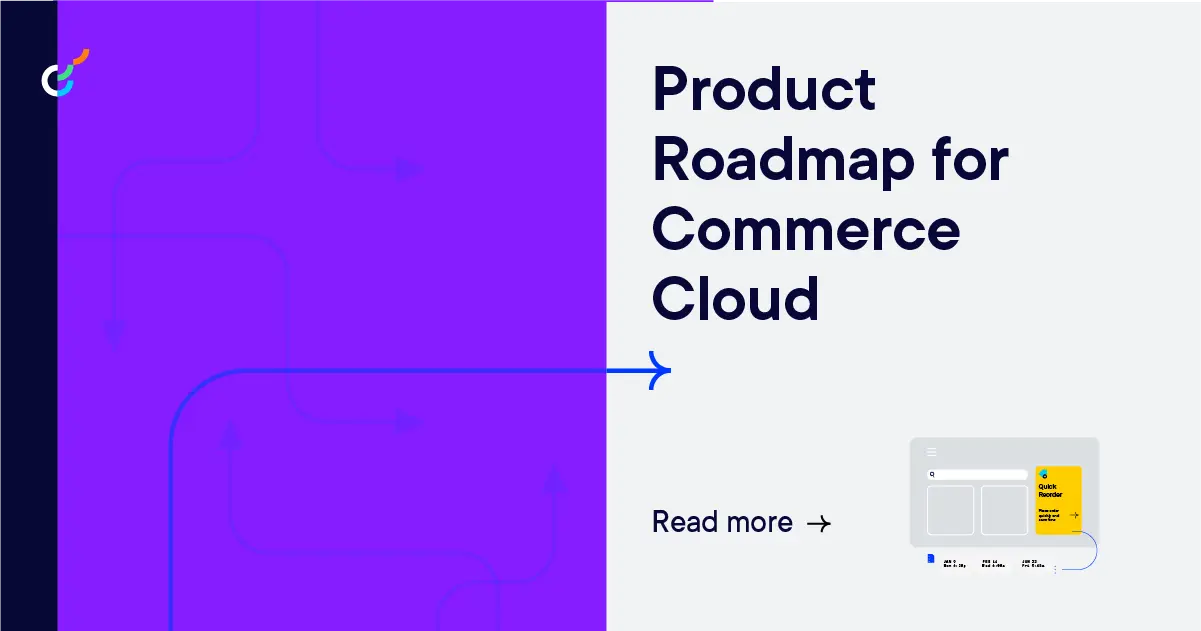The Commerce Cloud roadmap – B2C and B2B optimized experiences
The importance of digital commerce has seen a significant boost over the last year, and Optimizely's Commerce Cloud offerings have helped customers meet and exceed the increased demand. In this blog I’ll briefly reflect on the past year, and highlight some of the major roadmap items that we have in store for our Commerce Cloud offerings.

Justin Anovick

We have made some major strides in improving our Commerce Cloud offering over the last year.
For B2B Commerce Cloud, the new React-based storefront and CMS gives business users more granular control over the B2B customer experiences. The Mobile App has even more configurability, with a Mobile App CMS feature that enables business users to configure their app experiences without having to redeploy to the app stores. Our Commerce Analytics offering continues to provide proof that a digitally-engaged customer is a valuable customer, even if transactions are placed offline (e.g. EDI). And finally, our PIM offering continues to focus on efficiency, automating product to category assignment via rules, image to product assignment through file name matching, and more.
The past year has also seen the release of our Customer Services application in the Commerce Cloud offering to allow customers to be served effectively through non-digital channels.
As we look ahead, our drive to improve our customers’ ability to effectively sell online (and off) continues with the following roadmap highlights.
B2B Commerce Cloud
1. B2B goes global
Our industry-leading B2B commerce platform is going global! While we have always had global customers, we are now offering B2B Commerce Cloud to customers outside of North America. As we enter various regions, we are taking a pragmatic approach, ensuring we are onboarding existing or new partners onto our new offering and adding capabilities that are required for a specific region.
2. Vendor Managed Inventory
B2B organizations, especially distributors, are looking for ways to provide unique services to their customers. They want to be a critical partner in their customers’ businesses, providing services that their lower-cost competition cannot. Vendor Managed Inventory (VMI) enables B2B organizations to help manage inventory and replenishment at their customers’ construction sites, factory floors, stock rooms, etc. The VMI capabilities leverage the core B2B Commerce functionality and ERP integration, while providing a mobile app experience for users to scan barcodes to update inventory counts or create a replenishment order.
3. Mobile app SDK
Customers continue to want to provide their customers with a unique mobile app experience, or they have an existing app that they want to enhance with commerce functionality. We are taking our existing, fully-featured mobile app and providing an SDK to customers and partners to significantly accelerate their mobile app development. We will continue to enhance the base mobile app with new features, reflecting those that are added to the core Commerce platform but also mobile-specific features that take advantage of the mobile device.
4. Optimizely App Marketplace
The B2B Commerce platform is a major piece of an organization’s digital strategy, but that platform needs to easily integrate with a number of other systems (e.g. ERP, PIM, CRM, etc.). While B2B Commerce Cloud already includes many standard connectors out of the box, we want to expand our support of integrating to more third-party systems. Leveraging the native integration architecture and existing Optimizely App Marketplace, we want to make it easier for our technology and implementation partners to build and deploy their own integration connectors. We will be updating the underlying B2B Commerce architecture to accept third-party integration packages without requiring them to be a part of the base code, accelerating the time for our customers to launch fully-integrated sites.
5. PIM: Multi-language & external integration
Managing robust product content continues to be critical for an effective commerce experience. We are expanding our PIM capabilities to include the management of multi-language product content, reflecting existing capabilities in our Commerce Cloud offerings. We also recognize that this product information has uses outside of Commerce, so we will be building APIs that will enable customers to extract data from the PIM and send it to any external systems.
Commerce Cloud
1. .NET 5
Previously called .NET Core, this is the very latest development platform from Microsoft and one of the most loved development languages. This release brings performance improvements to the platform resulting in even faster customer experiences across all channels.
Automated migration tooling will be provided to streamline the adoption of this version. Improving the everyday satisfaction of developers building on the platform.
2. PIM
The PIM will be available in all regions for the B2C Commerce platform. Bringing efficiencies to the product onboarding and collaboration processes in all types of B2C and B2B organizations. Reducing onboarding time through streamlined enrichment and readiness processes, while bringing together the right people globally to collaboration on merchandising decisions.
Enhance multi-lingual capabilities will ensure suitability for multi-nationals trading in multiple countries.
3. Commerce Analytics
Commerce analytics will be available in all regions, allowing businesses to analyze revenue by channel in great detail. Providing visualizations for trends of time and the ability to compare historic performance.
In the future these analytics will be enhanced with overlayed clickstream and interaction data providing deeper insights into what moves the needle commercially.
4. Commerce APIs
Evolving commerce APIs with deeper coverage across the commerce transaction capabilities. Powering commerce across more channels in a seamless way.
5. Improved Promotions
Handling large numbers of promotions and eligibility rules for retailers with running a large number of concurrent promotions and discounts. With refinements to UI capabilities to manage discount interactions.
